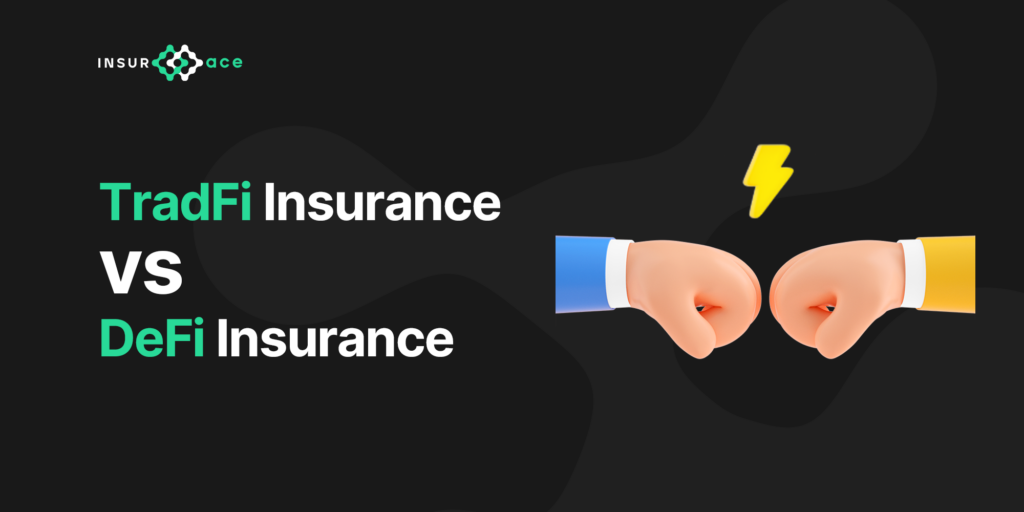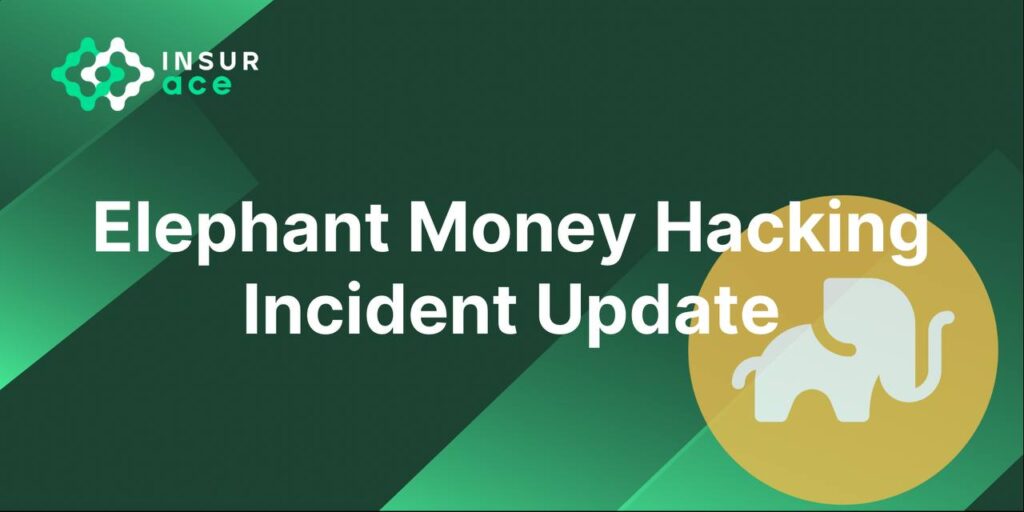“When new technologies enable new activities, products, and services, financial regulations need to adjust. But, that process should be guided by the risks associated with the services provided to households and businesses, not the underlying technology. Where possible, regulation should be ‘tech neutral”.
Janet Yellen – US, Treasury Secretary.
In our article on “How Regulations Must Evolve for DeFi Insurance to Thrive” we explained that the global interconnectedness with the TradFi capital markets means that DeFi industry requires effective and holistic macroprudential measures to ensure the safety and long-term viability of the on-chain financial products.
Beyond facilitating financial transactions, many businesses are seeking ways to expand the use of crypto assets — as collateral for loans, as assets in retirement plans, the denomination for mortgages, and as a basis for risk-sharing.
So, it is easy to erroneously imagine that the Crypto-DeFi Insurance products could inherit certain risks from the traditional financial system, which may hamper its ability to support real economic activity.
In this article, we highlight two of the biggest problems facing TradFi Insurance and the different innovative ways that Crypto/DeFi Insurance addresses these challenges.
DeFi Insurance vs TradFi Insurance
Insurance is a form of risk management, primarily used to hedge against the risk of an uncertain event or contingent loss. Much like Insurance in the traditional finance world, DeFi insurance basically aims to protect users from peculiar risks and catastrophic losses in exchange for a premium. The premium is computed based on the size of their digital assets holding and what platform they are holding it with.
DeFi insurance seeks to uphold the same critical principles of fairness and equity that have guided the TradFi insurance for centuries.
However, here are some of the key differentiating factors between both sectors.
Insurable Assets — TradFi insurance focuses heavily on providing cover against losses pertaining to physical assets and commodities, DeFi Insurance is mostly tilted towards on-chain digital assets and the technical infrastructure that hosts them.
Dynamic Cover Limit — DeFi insurance deploys data-oracles for real-time cover limit computation. It ensures that, unlike TradFi Insurance where limits and premium rates are hard set, and rigid, in DeFi Insurance, Cover policy limits increases or decrease commensurately with the market price of the underlying crypto assets.
Underwriting Process — While a TradFi insurance policy might be underwritten and issued by a restricted group of dedicated insurers, and risk adjusters, a DeFi insurance policy instead relies on permissionless contracts and transparent on-chain data to compute premiums while its community of users collectively assess risks and orchestrate payouts on a case by case basis. This democratic and transparent approach often leads to a more efficient outcome.
Operational Jurisdiction — Most Traditional insurance policy products are quite limited in scope by geographical jurisdiction where the parties to the insurance contract are domiciled. While DeFi Insurance protocols are as ubiquitous as the borderless blockchain technology that powers them.
2 Biggest Challenges of the Traditional Insurance and Solutions Provided by DeFi Insurance Protocols.
Insurance has existed in its current form for more than 200 years. Starting mainly from the shipping industry and spreading gradually to almost every sector of commercial activity following the industrial revolution. Over the years, the industry has continued to grapple with various challenges that have remained unsolved.
Today, the advent of DeFi Coverage protocols like InsurAce.io has led to the development of innovative new solutions dedicated towards solving these age-long problems—with the use of decentralized data-hosting and blockchain technology
- Conflict of Interests
Conflict of interest refers to any situation where a financial services provider or has an actual or potential interest that may influence the objective performance of its obligations to customers and vice-versa.

Insurance is a multi-party contract which gives room for information asymmetry and conflict of interests. Evidently, over the years, TradFi insurance has been riddled with recurrent cases of fraudulent claims, contractual disputes, mistaken payments, and litigious cases of conflicts of interest.
The Insured party may be incentivized to overstate the extent of loss to draw a larger payout while the Insurer may overstate a customer’s risk profile to impose higher premiums.
Another form of Conflict of Interest is the tendency for Insurance companies to deploy funds collected in contribution pools in high-risk investments in the quest to generate maximum returns. Such high-risk investments expose Insurers to losses and potential sanctions from regulators which significantly endangers the company’s capacity to fulfill its obligations to customers.
Hence, there is an acute need for Consumer and Investor protection from all forms of fraudulent practices in Insurance, ranging from falsified information to outright negligent vicarious conduct.
DeFi Insurance Solution — Smart Contracts
DeFi Insurance has proffered effective solutions to Consumer & Investor Protection by deploying Insurance policies that are based on autonomous permissionless smart contracts. With smart contracts, the rules, terms and conditions to the Insurance agreements are outlined in an open-source code and executed autonomously.

With DeFi Insurance, Contracts are drawn, funds are aggregated and payouts are executed all on the bases of the pre-agree rules encoded in self-executing smart contracts. And due to the immutability and transparency of the blockchain, neither party can alter the rules unilaterally.
In cases where proactive changes have to be made, members of the community i.e. Decentralized Autonomous Organizations have to collectively consent to it. This ensures Investors and Users of Insurance services are protected from vicarious actions.
Furthermore, on-chain data tools like blockchain explorers, allow DeFi Insurance customers, Fund providers, and Underwriters to view the Insurance protocols’ treasury in real-time. This level of transparency prevents the protocol team from unilaterally deploying funds in high-risk investments or carrying out other negligent financial manipulations to the detriment of stakeholders.
Insurance Fraud — due to Information Asymmetry & Inefficient Risk Analysis
For many decades Insurance fraud has been one of the major challenges that undermines the tradFi coverage system. Insurance Fraud is perpetrated mainly on the basis of information asymmetry.
Theoretically, asymmetric information depicts an imbalance in the information available to the buyer and the seller of a specific service. In TradFi insurance, much of contractual agreements are based on the information that the Insured provides about each underlying asset.
A 2022 research report by The Coalition Against Insurance Fraud (CAIF) showed that insurance fraud costs consumers in the US about $308.6 billion annually— with over 10% property-casualty insurance losses resulting from Fraud claims.
When customers provide false or inadequate or outdated information, knowingly or unknowingly, Insurers are unable to acquire the right data sets to analyze the inherent risks. And this often leads to inefficient outcomes like setting premiums and payouts too low or too high, depletion of contribution pool, premature liquidation or insolvency of the insurer.
DeFi Insurance Solution — On-chain Data, Independent Audits & Real-time Data Oracles
Insurance Fraud, poses an existential threat to the adoption and sustainability of the global insurance industry. With the advent of various Web2 IT monitoring tools, TradFi Insurance companies have continued to struggle to reign it in.
To solve the problem of Insurance Fraud, DeFi Insurance protocols have emerged with new innovative approaches to data collection and risk analysis.
By sourcing data about digital assets directly from blockchain ledgers and independent data sources, inordinate customers are effectively prevented from providing falsified data about their digital assets that they intend to insure.
In the same vein, DeFi insurance protocols also often make use of data Oracles to collect real-time data about the various digital assets and blockchain networks that they offer Coverage products.
This improves data-fit and enables real-time evaluation of risk factors. This greatly solves the problem of information asymmetry, outdated information and preventing information-based arbitrage.
The use of on-chain data sources, independent audits, and real-time oracles enables DeFi insurance to eliminate Insurance Fraud and solve age-long problems that have plagued the TradFi insurance industry.
Stay in Touch, Join the InsurAce community. >>> Linktree
Image Credits:


